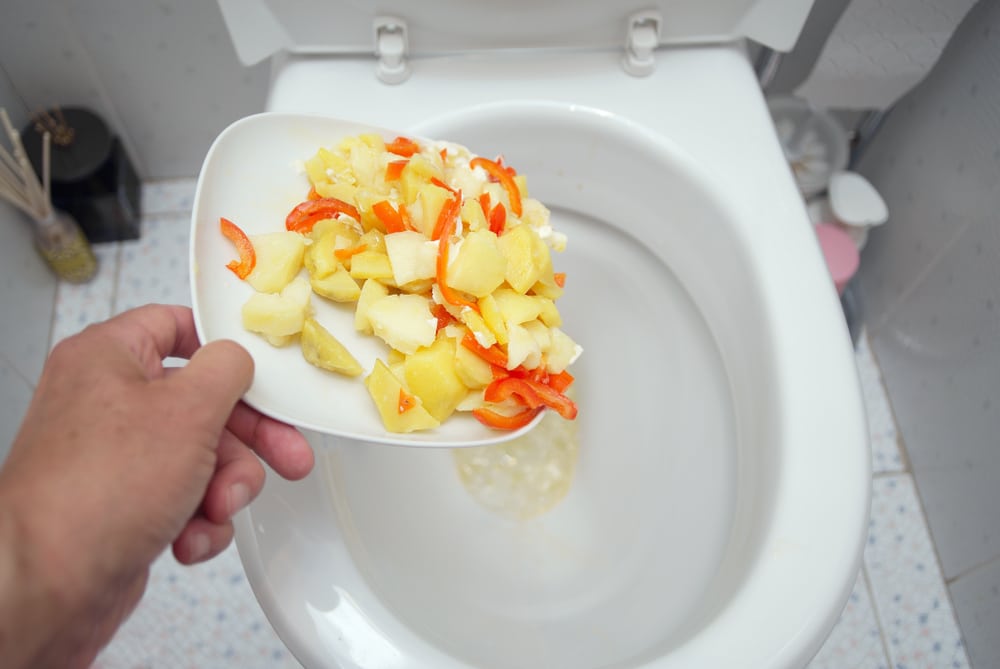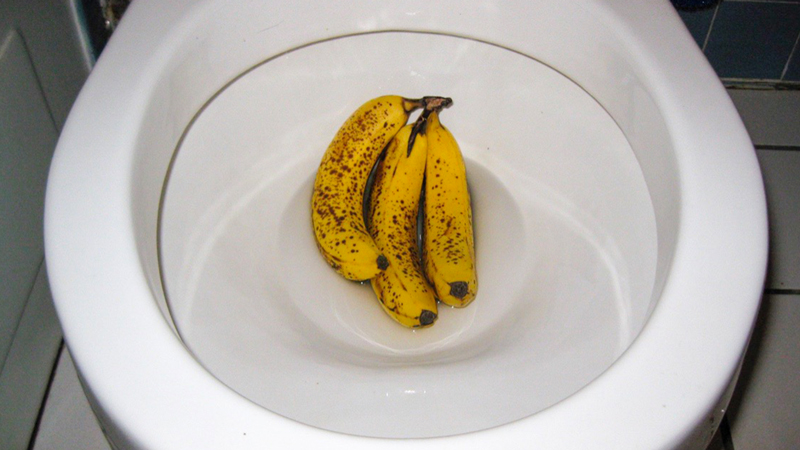We have unearthed this article about Flushing Food Down the Toilet? below on the net and accepted it made sense to write about it with you on this page.

Introduction
Lots of people are often confronted with the problem of what to do with food waste, particularly when it pertains to leftovers or scraps. One typical question that emerges is whether it's okay to flush food down the commode. In this post, we'll delve into the reasons people may take into consideration flushing food, the consequences of doing so, and alternative methods for proper disposal.
Reasons that people might think about flushing food
Absence of awareness
Some people may not be aware of the prospective harm brought on by purging food down the bathroom. They might mistakenly think that it's a harmless technique.
Comfort
Purging food down the toilet may feel like a quick and simple solution to dealing with undesirable scraps, specifically when there's no close-by trash bin available.
Laziness
In many cases, people might merely select to flush food out of sheer negligence, without taking into consideration the repercussions of their activities.
Effects of flushing food down the toilet
Ecological influence
Food waste that ends up in rivers can add to pollution and injury marine ecological communities. Furthermore, the water made use of to purge food can stress water sources.
Pipes concerns
Flushing food can lead to stopped up pipelines and drains, causing costly plumbing fixings and aggravations.
Sorts of food that must not be purged
Coarse foods
Foods with coarse textures such as celery or corn husks can get tangled in pipes and trigger obstructions.
Starchy foods
Starchy foods like pasta and rice can take in water and swell, leading to blockages in pipelines.
Oils and fats
Greasy foods like bacon or cooking oils should never ever be flushed down the bathroom as they can solidify and create obstructions.
Proper disposal methods for food waste
Making use of a waste disposal unit
For homes geared up with waste disposal unit, food scraps can be ground up and flushed through the pipes system. Nevertheless, not all foods appropriate for disposal in this fashion.
Recycling
Certain food product packaging materials can be recycled, reducing waste and minimizing ecological impact.
Composting
Composting is an environment-friendly way to deal with food waste. Organic materials can be composted and utilized to enrich dirt for gardening.
The significance of correct waste administration
Lowering ecological damage
Proper waste management practices, such as composting and recycling, help lessen pollution and protect natural resources for future generations.
Securing pipes systems
By avoiding the practice of flushing food down the commode, homeowners can avoid costly plumbing fixings and keep the integrity of their plumbing systems.
Final thought
To conclude, while it may be alluring to purge food down the bathroom for comfort, it is necessary to understand the potential consequences of this action. By adopting appropriate waste monitoring methods and throwing away food waste responsibly, individuals can add to much healthier plumbing systems and a cleaner setting for all.
FLUSH FOOD DOWN THE TOILET?
FLUSHING FOOD CAN CAUSE BLOCKED DRAINS IN YOUR HOME
All of the plumbing fixtures in your home are connected to the same sewer pipe outside of your home. This outdoor sewer pipe is responsible for transporting all the wastewater from your home to the Council sewer mains. Even small pieces of food that go down the kitchen sink can cause problems for your sewer. It should therefore be obvious that flushing larger bits of food, such as meat, risks a clog in either the toilet itself or the sewer pipes. Flushing greasy food is even more problematic because oil coagulates when it cools, coating the interior lining of your pipes.
THE TOILET IS NOT A BIN
Food isn’t the only thing that people shouldn’t be flushing down the toilet. People use the toilet to dispose of all kinds of things such as tampons, makeup wipes, dental floss, kitty litter and even underwear. Water goes to great lengths to educate residents about the high costs and stress placed on wastewater treatment systems simply from people flushing the wrong stuff down the toilet. It costs taxpayers millions of dollars each year, and homeowners thousands in blocked drain repairs.
FLUSHING FOOD IS A WASTE OF WATER
Flushing food is a waste of our most precious resource - water. In June this year Level 1 water restrictions were introduced to protect water supply from drought conditions. Much of New South Wales continues to be affected by prolonged drought with recent figures revealing up to 97 per cent of the state remains in drought. Depending on whether you have a single or dual flush toilet, every single flush uses between five and 11 litres of water. In the current climate this is a huge amount of water to be wasting on flushing food that should be placed in the bin (or better yet, the compost).
https://www.jabplumbingsolutions.com.au/blog/can-you-flush-food-down-the-toilet

I ran across that write up about What Can Happen If You Flush Food Down the Toilet? when doing a lookup on the search engines. Are you aware of another individual who is serious about the niche? Feel free to share it. Thanks a bunch for being here. Come back soon.
Browse Our Site